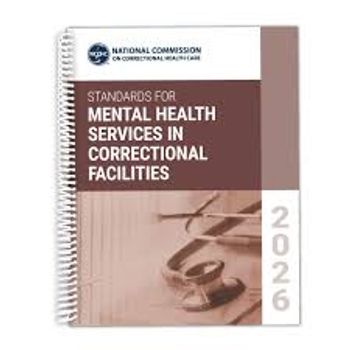
- Vol 33 No 2
- Volume 33
- Issue 2
A Dearth of Psychiatric Beds
The current shortage of psychiatric beds in the US is a major problem. Patients are discharged prematurely and often have to be readmitted or end up homeless or incarcerated.
COMMENTARY
The current shortage of psychiatric beds in the US is a major problem. Emergency departments (EDs) are crowded with acutely psychotic patients-some who wait for beds for up to a month. The pressure on existing beds is so intense that patients are discharged prematurely and often have to be readmitted or end up homeless or incarcerated. Nevertheless, many states continue to decrease the number of state hospital beds. One reason for such decisions by state officials is that there is no accepted standard regarding how many psychiatric beds are needed.
The recently published study of psychiatric bed needs by
The authors used a computer simulation program to model different scenarios to ascertain how many additional psychiatric beds would be needed to achieve an average preadmission wait time of less than a day. The answer was 356 additional beds, bringing the total bed capacity to 1314 or about 39 adult beds per 100,000 population. This calculation included only adult patients (ages 18 to 64) and assumed a median duration of stay in the state hospital of 20 days, which existed in the hospital under study at that time. This calculation did not include psychiatric
In 2008 a study was published by the Treatment Advocacy Center that estimated the minimum number of public beds necessary for adequate psychiatric services for a population of 100,000.2[
In contrast to the study by La and colleagues, the 2008 estimates included beds for children and forensic patients. The consensus estimate of bed need by the 15 experts was 50 (range 40 to 60) public psychiatric beds per 100,000 population. Given these findings, it seems reasonable to establish a range of 40 to 60 psychiatric beds per 100,000 population as a minimum standard currently needed for reasonable psychiatric care in the US in light of the realities of the present funding system.
Such caveats are necessary because we actually do not know how many
Given the present system, however, it is clear that a small number of individuals will continue to need a hospital that is staffed for very difficult patients and/or those whose stay should be measured in weeks, not days. As La and colleagues note, state psychiatric hospitals have traditionally played this role, since they “are designed and staffed to care for people with severe mental illness, including those who may become violent.” Thus, “state psychiatric hospitals are the ultimate safety net for people with mental illness.”
Psychiatric units in general hospitals and private psychiatric hospitals occasionally admit individuals who have the most severe forms of mental illness, but most are not staffed to do so. In addition, most individuals with the most severe forms of mental illness do not have health insurance and are considered less desirable by private psychiatric hospitals and psychiatric units in general hospitals, 81% of which are privately owned.
Currently, there are about 35,000 state psychiatric beds available, or about 11 beds per 100,000 population.
It would thus be useful to establish a standard for what percentage of the 40 to 60 beds per 100,000 population should be in state psychiatric hospitals, but there is no such standard at this time. In 1955 there were 558,239 state and county psychiatric beds available, or about 340 beds per 100,000 population. Currently, there are about 35,000 state psychiatric beds available, or about 11 beds per 100,000 population. However, even this figure is misleading because in most states the existing state psychiatric hospital beds are largely occupied by court-ordered long-stay patients and therefore not available for the admission of acutely psychotic patients.
For example, a 2014 study reported that Larned State Hospital in Kansas had 457 beds.6[
As La and colleagues point out, other measures can be taken to decrease the need for psychiatric beds. Such measures include assertive community treatment and the use of assisted outpatient treatment (AOT) to ensure medication adherence. Studies of AOT have shown that it results in a dramatic decrease in psychiatric rehospitalization.7
It is very clear that the more effective the outpatient services, the less need for psychiatric hospitalization. But despite the best outpatient efforts, some severely ill patients will continue to need the ultimate safety net of the state psychiatric hospital. It is important that we recognize that fact and establish a minimum standard for how many psychiatric beds are needed.
Disclosures:
Dr Torrey is a research psychiatrist who specializes in schizophrenia and bipolar disorder. He is founder of the Treatment Advocacy Center and Associate Director of the Stanley Medical Research Institute, which supports research on schizophrenia and bipolar disorder, and he is Professor of Psychiatry at the Uniformed Services University of the Health Sciences in Bethesda, MD.
EDITOR'S NOTE: Readers are invited to comment on our website. Please adhere to our editorial request to leave your full name and professional title at the end of your comment
.
References:
1. La EM, Lich KH, Wells R, et al. Increasing access to state psychiatric hospital beds: exploring supply-side solutions. Psychiatr Serv. 2015. [Epub ahead of print].
2. Torrey EF, Entsminger K, Geller J, et al. The shortage of public hospital beds for mentally ill persons; 2008. The Treatment Advocacy Center. Arlington, VA.
3. Pasamanick B, Scarpitti FR, Dinitz S. Schizophrenics in the Community: An Experimental Study in the Prevention of Hospitalization. New York: Appleton-Century-Crofts; 1967.
4. Davis AE, Dinitz S, Pasamanick B. Schizophrenics in the New Custodial Community: Five Years After the Experiment. Columbus, OH: Ohio University Press; 1974.
5. Polak PR, Kirby W. A model to replace psychiatric hospitals. J Nerv Ment Dis. 1976;162:13-22.
6. Torrey EF, Zdanowicz MT, Kennard AD, et al. The treatment of persons with mental illness in prisons and jails: a state survey. 2014. The Treatment Advocacy Center. Arlington, VA.
7. Torrey EF. The Insanity Offense. New York: Norton; 2012:192-196.
Editor’s note: We invite you to read Dr Torrey’s recent essay “
Articles in this issue
almost 10 years ago
Introduction: An Essential Part of the Mental Health Evaluationalmost 10 years ago
New Insights Into Narcissistic Personality Disorderalmost 10 years ago
Comorbid Clinical and Personality Disorders: The Risk of Suicidealmost 10 years ago
Does Genius Equal Madness?almost 10 years ago
Amy: The Frenzy of Renownalmost 10 years ago
Suicide Clusters on College Campuses: Risk, Prevention, Managementalmost 10 years ago
Positive Psychiatry: An Interview With Dilip V. Jeste, MDalmost 10 years ago
Neuropsychiatric Masquerades: Diagnosis and Treatmentalmost 10 years ago
5 Mental Health Diagnostic Challenges: Update on “To Err Is Human”almost 10 years ago
VIP ReferralNewsletter
Receive trusted psychiatric news, expert analysis, and clinical insights — subscribe today to support your practice and your patients.














